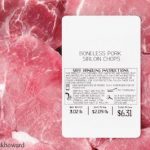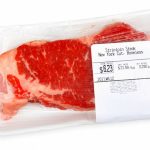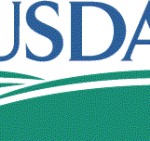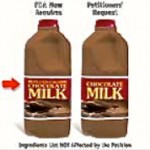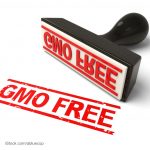It kind of got lost in all the good vs. evil stuff and cool CGI, but tariffs were a significant part of the plot in Star Wars. They're also a plot point of a protracted disagreement between the U.S. and Canada about country-of-origin (COOL) food labels: COOL wars. Historically, COOL labels have had mixed success at accomplishing their goal: providing consumers with helpful information so they can make informed choices. If you know that Country A is known for the high-quality kiwi it produces and that they're sticklers for food safety, when you see kiwi at the market with a sticker or sign that says: Product of Country A, you will put them in your cart. And roll right by if the converse is true. But when an animal is born in one country, raised in another and slaughtered in yet another, … [Read more...]
Canada Unhappy With USDA’s COOL Rule
Canada is unhappy with the U.S. Department of Agriculture’s (USDA’s) final ruling on Country of Origin Labeling (COOL) which requires meat labels to specify the country or countries where the animal was born, raised and slaughtered. For months, Canadian Agriculture Minister Gerry Ritz has warned that Canada will take retaliatory actions if the measure, which it considers discriminatory, is passed. Both Canada and Mexico told the World Trade Organization (WTO) that COOL labeling, as it was first enacted in the U.S. in 2008, presented a barrier to trade. The WTO maintained that the U.S. had the right to require COOL, but the labels didn’t provide enough useful information to consumers to justify the additional cost it created for imported meat. Since that time, the U.S. has worked to … [Read more...]
USDA Releases Final COOL Rule Giving Consumers What They Want, Information
Americans want to know where their food comes from and now, thanks to the U.S. Department of Agriculture’s (USDA’s) final ruling on Country of Origin Labeling (COOL), they’ll have a lot more information. The new rule eliminates the vagaries of current labels, such as “mixed origin” and provides consumers with the country where the animal was born, raised and slaughtered. The Farm Security and Rural Investment Act of 2002 and the Food, Conservation and Energy Act of 2008 required retailers to tell customers the country of origin of meats, poultry, vegetables, fruits, and some nuts. When the USDA implemented that rule in 2008 Canada and Mexico objected calling the COOL law a barrier to trade and brought their grievance to the World Trade Organization (WTO). The WTO ruled that the U.S. … [Read more...]
Vermont House Passes GE Labeling Bill
The Vermont House of Representatives became the first legislative body in the country to pass a bill requiring all genetically engineered (GE) foods to be labeled as such with its passage of H112 by a vote of 99-42 on May 10. Because the vote came near the end of this session, it's likely that that next step, a vote in the Vermont Senate, will not come until January 2014. Labeling GE foods is required in dozens of countries, but not in the U.S. Sen. Barbara Boxer (D-CA) and Rep. Peter DeFazio (D-OR) have recently introduced a federal bill and, on a state level, bills similar to Vermont's are pending in Maine, Connecticut and Washington. Alaska has already passed legislation requiring labeling of GE fish. And, laast fall, a ballot initiative in California that would have required all GE … [Read more...]
If Chocolate Milk Is Low-Cal Should The Label Have To Say So?
If chocolate milk is low calorie, should the label have to say so? That is the question before the U.S. Food and Drug Administration (FDA) which has been flooded with comments about a proposed change to milk labeling rules.The agency has received more than 30,000 comments on the issue, many of which indicate consumers are confused about what exactly is being proposed, according to Mary Poos, Ph.D., deputy director of FDA’s Office of Nutrition, Labeling and Dietary Supplements. When natural sugar in flavored milk is replaced with a non-nutritive sweetener such as aspartame, sucralose, or acesulfame potassium, it reduces the calorie count. Existing rules require that that information appears prominently on the package with phrases such as “reduced calorie” and that the specific name of … [Read more...]
MO Bill Would Require GM Fish And Meat To Be Labeled
Missouri is the latest state to tackle the issue of labeling genetically modified (GM) foods. Missouri State Senator Jamilah Nasheed has introduced a bill that would require all GM fish and livestock produced and sold within the state to be clearly labeled as genetically engineered. There is no federal law requiring GM foods to be labeled, so the issue has been taken up on the state level. In 2005, Alaska became the first, and so far only, state in the country to require that bioengineered fish be labeled. A handful of other states, including California, New Mexico, Oregon and Washington have all floated similar measures. In November, Californians voted down a ballot measure, Proposition 37, that would have required labeling all foods sold to consumers that were made from GM plants … [Read more...]
All Whole Grains Are Not Created Equal
The health benefits of eating whole grains are well established, but not all foods labeled whole grain are created equal, according to a new study by the Harvard School of Public Health (HSPH). In fact, standards for classifying foods as “whole grain” are so nebulous that some products labeled as such have more sugar and calories than some that aren’t. “Given the significant prevalence of refined grains, starches, and sugars in modern diets, identifying a unified criterion to identify higher quality carbohydrates is a key priority in public health,” said Rebecca Mozaffarian, onne of the study’s authors who is also a project manager in the Department of Social and Behavioral Sciences at HSPH. The other researchers were: Rebekka Lee and Mary Kennedy; Dariush Mozaffarian, associate … [Read more...]
Nutrition Facts Label Turns 20
The black and white “Nutrition Facts” label that’s on almost all the food we buy turns 20 this year. For many of us, it’s hard to remember a time when food packaging lacked this fact box, but before it was mandated by the Nutrition Labeling and Education Act of 1990, nutritional labeling was provided by manufacturers on a voluntary basis. The FDA issued the final rule for food nutrition labeling on Jan. 6, 1993. Over the years, consumers have increased their usage of the label when shopping. From 2002 to 2008, the percentage of US consumers reporting that they often use the label when shopping rose from 44 to 54 percent, according to data from the US Food and Drug Administration’s (FDA’s) Health and Diet Survey. Increased consumer use of the labels has prompted some manufacturers to … [Read more...]
